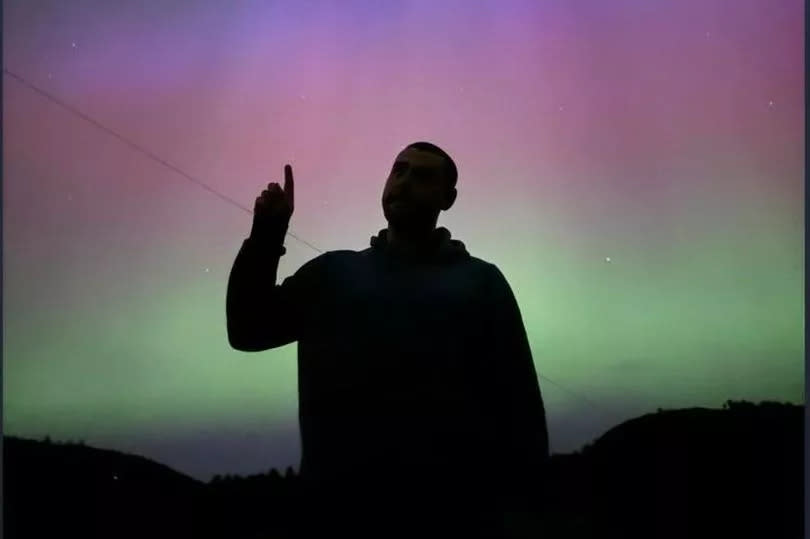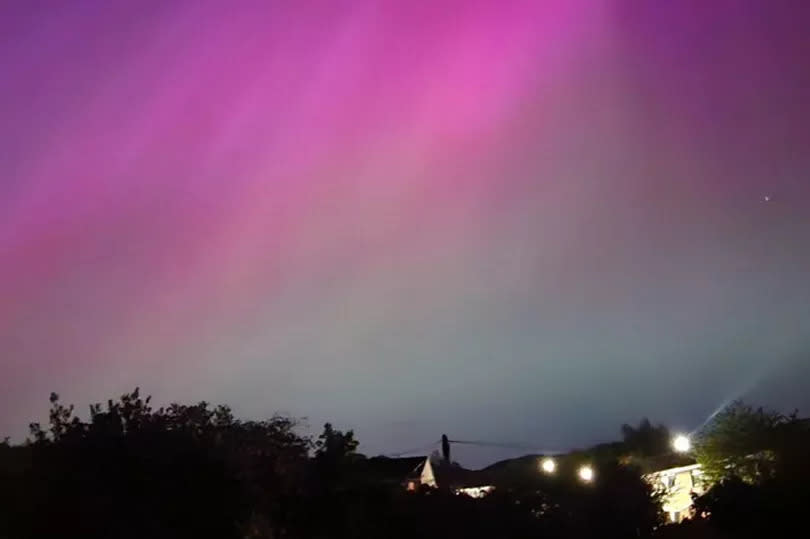Northern Lights to be visible above Edinburgh again - how to see them if you missed it

The Northern Lights lit up the night sky above Edinburgh and the Lothians on Friday night.
But if you were one of the unlucky ones who missed it and woke up feeling a little jealous while scrolling through social media, fear not, you may be in for a chance to catch them on Saturday.
According to experts, the aurora borealis may be visible across Scotland if the conditions are right thanks to a serious solar storm. The best time to see the dazzling spectacle is if the sky is clear and you are away from areas with heavy light pollution.
On Friday, hundreds flocked to the hills, with crowds spotted on Arthur's Seat, Clermiston Hill and the coastline.
READ NEXT-Edinburgh woman injured as multi-agency response scrambled to city beauty spot
READ NEXT-Edinburgh emergency services race to 'incident' near busy town high street
Meteorologists have said the Northern Lights will be visible between 10pm on Saturday and 2am on Sunday, different gases in the Earth's atmosphere will become energised by the charged particles and form different colours, as the Mirror reports.
The aurora borealis may not be visible to the human eye but stargazers are encouraged to view them through a camera as camera lenses are able to adapt to different wavelengths.

On social media, Northern Light chasers have suggested to those using a phone camera, to use night mode and with a high exposure. Some have said it is only when they take the photo that the dazzling pink and green display in the sky became apparent.
Chris Snell, a meteorologist at the Met Office, said there were sightings "from top to tail across the country". He said: "It is hard to fully predict what will happen in the Earth's atmosphere, but there will still be enhanced solar activity tonight, so the lights could be visible again in northern parts of the UK, including Scotland, Northern Ireland and the far north of England."
Chris Page, ITV News meteorologist and weather presenter, said: "Activity is expected to slowly decline, however there is a good chance (cloud permitting) you’ll be able to see it again tonight."
Why does it happen?
According to PA reporters, Aurora displays occur when charged particles collide with gases in the Earth’s atmosphere around the magnetic poles.
As they collide, light is emitted at various wavelengths, creating colourful displays in the sky.
In the northern hemisphere, most of this activity takes place within a band known as the aurora oval, covering latitudes between 60 and 75 degrees.
When activity is strong, this expands to cover a greater area – which explains why displays can be occasionally seen as far south as the UK.
According to the US National Oceanic and Atmospheric Administration (NOAA), the earth was hit by a G5 geomagnetic storm on Thursday. A G5 rating is considered “extreme” and the strongest level of solar storm.
The cause of this storm was a “large, complex” sunspot cluster, 17 times the diameter of Earth.
How common is it?
The last storm with a G5 rating hit Earth more than 20 years ago in October 2003 and caused power outages in Sweden.
Every 11 years, the sun’s poles reverse, causing bursts of solar activity resulting in northern lights. Scientists predict the next solar maximum will occur at the end of 2024.

 Yahoo News
Yahoo News 
